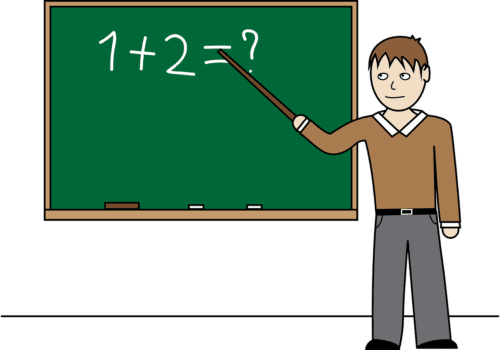I have been silent for months on the issue of education. However, a Gannett Lo-Hud article about the plummeting of teacher candidate enrollments in NYS Colleges and Universities revived my inspiration to say what has been on my mind for quite a while.
According to the article, records show that teaching programs throughout the State University of New York system have experienced roughly a 40 percent decline in enrollment over the past five years. There was also a 27 percent decline in undergraduate students in private-school programs in New York between 2012 and 2014 and a 17 percent drop in graduate students.
This is the real reason public education will fall to some future Secretary of Education, Teach for America bred policymakers, corporate and charter school leaders, and any of the next democratically elected presidents. It is being ignored and swept under the rug. Public education won’t fall because of Standardized Testing. It won’t fall because of Common Core or data mining. It will fall because of the lack of good, devoted career teachers.
The article quotes Carl Korn, spokesman for New York State United Teachers union.
“The war on teachers and the teaching profession waged by so-called reformers made the profession less attractive and less desirable for bright young people seeking professional careers.”
For decades the numbers of teaching candidates have dwindled. I have witnessed far too many wonderful teachers retire early or resign because of the worsening working conditions from kindergarten through high school. I have witnessed and been part of conversations with high school and college students about their aspirations and have been saddened by the plummeting passion for pedagogy. This decline has most recently turned into a death spiral for teaching as a profession.
For years people have been writing about the “lowering of standards” and a decline in the abilities of candidates in many schools of education. For years many of us have fought against the growth of Teach for America and its cooperating charter schools. We have fought against Common Core, Standardized Tests, and data mining, yet we have failed to see the bigger, long-term picture. We will run out of teachers, let alone enough good and great teachers. Who will we turn to then?
These changes are not entirely the result of changes in education. They are part of cultural and structural economic changes in our 21st century nation. The UCLA college freshman survey has been measuring the attitudes of 18-year-olds for approximately 50 years. Back when I was in college in the late 1960s, we felt more driven to change the world as opposed to getting higher salaries and more assets by about a 3:1 ratio. Now that has flipped 180 degrees.
For years college students who wanted to become career teachers because they believed in it as a profession has disappeared as the calling to even higher paid, more prestigious positions have stolen the best and brightest from the profession. The pull of a lucrative income in the business world has increased. Teaching salaries have slowly risen across the nation creating good middle-class jobs. The problem is that at the same time, business salaries, commissions, bonuses, and fringe benefits skyrocketed. Not surprisingly, the number of future teachers has radically dropped.
Unions, once strong defenders of working people have declined in numbers and influence, regardless of what the AFT and Randi Weingarten say. Automation, which has decimated every other US industry, has crept into ours as technology, once seen as a great tool for innovative teachers, has now turned teachers into tools. Creativity is lost. Long live technology.
What have been the net results? There have been more vacancies, fewer qualified and expert candidates to fill them, more teacher shortages, and more “trumped up” reasons to say that schools are failing.
So-called educational reforms have also greatly decreased the number of candidates for teaching. Survey after survey has said that salary and benefits have never been as important as working conditions for teachers. These abominations have created such terrible working conditions that, not only do fewer want to use their talents and honed skills to teach, more and more experienced teachers want out because they have lost the working conditions that allow them to do what they do best…TEACH!
A wealth-based sliding scale is also at play in this phenomenon. The communities in rich school districts don’t react to the problems because, frankly, they don’t experience it. Teachers in these districts usually continue to work almost as they had prior to the new pressures, because of past and present successes. They also still receive salaries often over 6 figures and excellent benefit packages that are at least somewhat comparable to many of their friends in business, law, and medicine.
 Middle-income districts see a slower decline in the number of qualified teachers as their districts succumb more slowly to statewide and economic pressures. They are less able to afford smaller class sizes or the highly gifted teachers who wealthier districts hire. Working class districts are harder hit, as fewer teachers want to work under harder conditions and lower wages and benefits. They usually fill open positions with newer less experienced people looking for a place to start, but over time lose them to wealthier districts because after a few years these teachers need to better support their families.
Middle-income districts see a slower decline in the number of qualified teachers as their districts succumb more slowly to statewide and economic pressures. They are less able to afford smaller class sizes or the highly gifted teachers who wealthier districts hire. Working class districts are harder hit, as fewer teachers want to work under harder conditions and lower wages and benefits. They usually fill open positions with newer less experienced people looking for a place to start, but over time lose them to wealthier districts because after a few years these teachers need to better support their families.
Hardest hit? No surprises here. Urban or rural, the poorest districts suffer the biggest losses of teachers and good candidates to replace them because the state mandates are more entrenched, the working conditions the worst, the ability to be creative is often gone, and of course the wages and benefits are unable to support a family. So where do all the charters and TFA people go? We know.
Based on the findings in the Lo-Hud article it won’t be long until more working class, then middle-class, and even wealthy districts will feel this heat and be forced to go along with the cancerous changes. Friends in one of my former teaching haunts, (Scarsdale High School) tell me that the number of superior candidates for any teaching position has drastically dropped. I am not surprised. When I was on hiring committees in the 1990s through 2008, I saw that even then, even there. It has gotten worse as more and more people are retiring.
So, by 2025, will alternative professional schools and TFA like alternative programs replace universities and colleges? Will teaching be a career for creative teachers, or a temp job, easily handled by minimally skilled and talented robotic technocrats who can follow computer programs? Will public school systems be privatized in their entirety? Will the teaching profession disappear like coal mining? Will automation do to it what it did to auto manufacturing? Will it be “exported” to private concerns? Yes.
We have ignored this issue too long. Of course, Common Core, charters, standardized testing, and data mining are all working to destroy quality public education. We must still fight against those. However, we have failed to see the bigger picture. We have used poor political strategies that seemed partly successful, but have made us ignore the huge problem of teacher shortages.
A well-known superintendent and fighter for public education from Long Island, Joe Rella, starts and ends every meeting and speech he has been invited to by saying, “How are the children?”
Without teachers, they are not well, and will get worse.
Subscribe to edCircuit to stay up to date on all of our shows, podcasts, news, and thought leadership articles.




